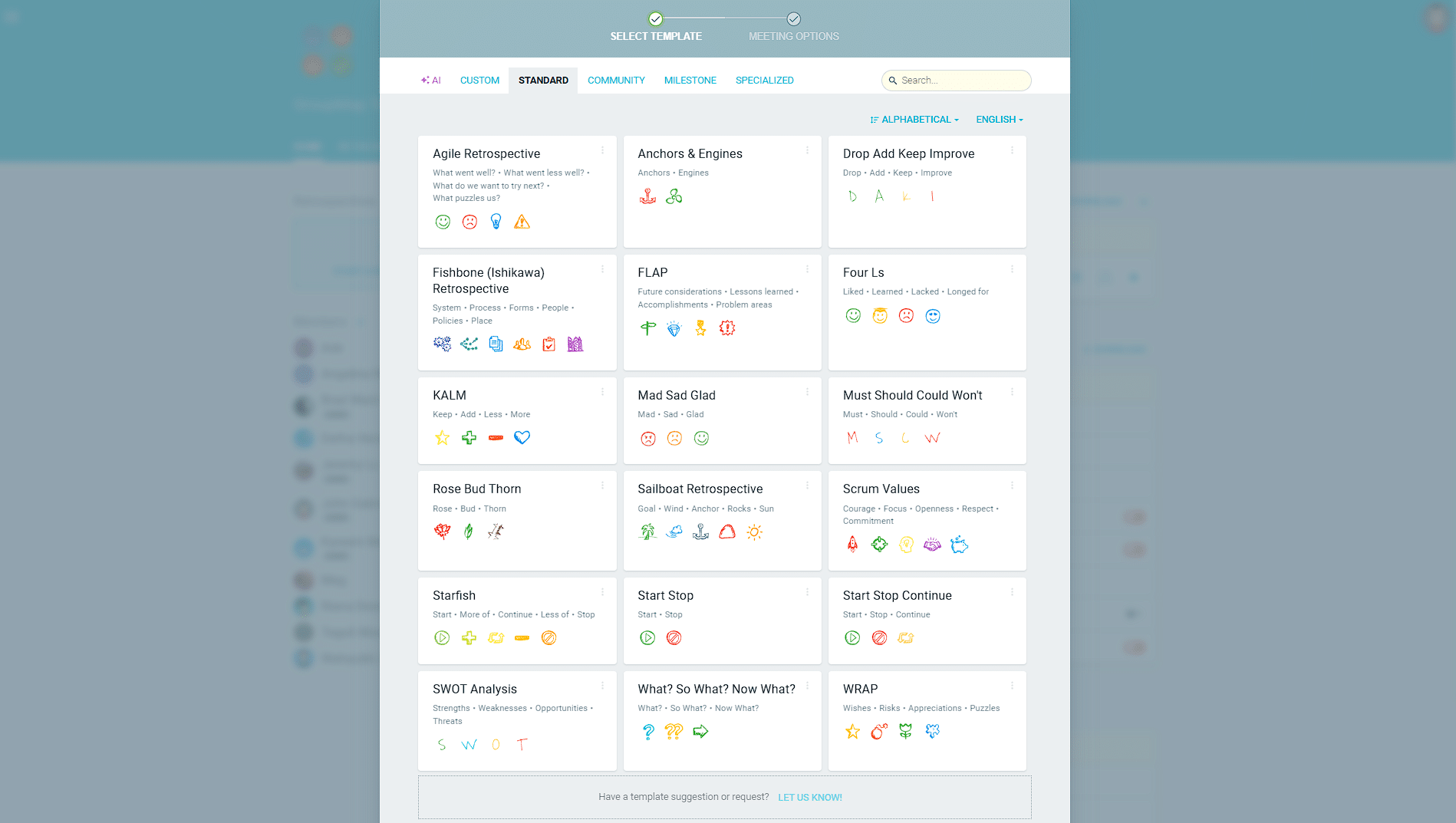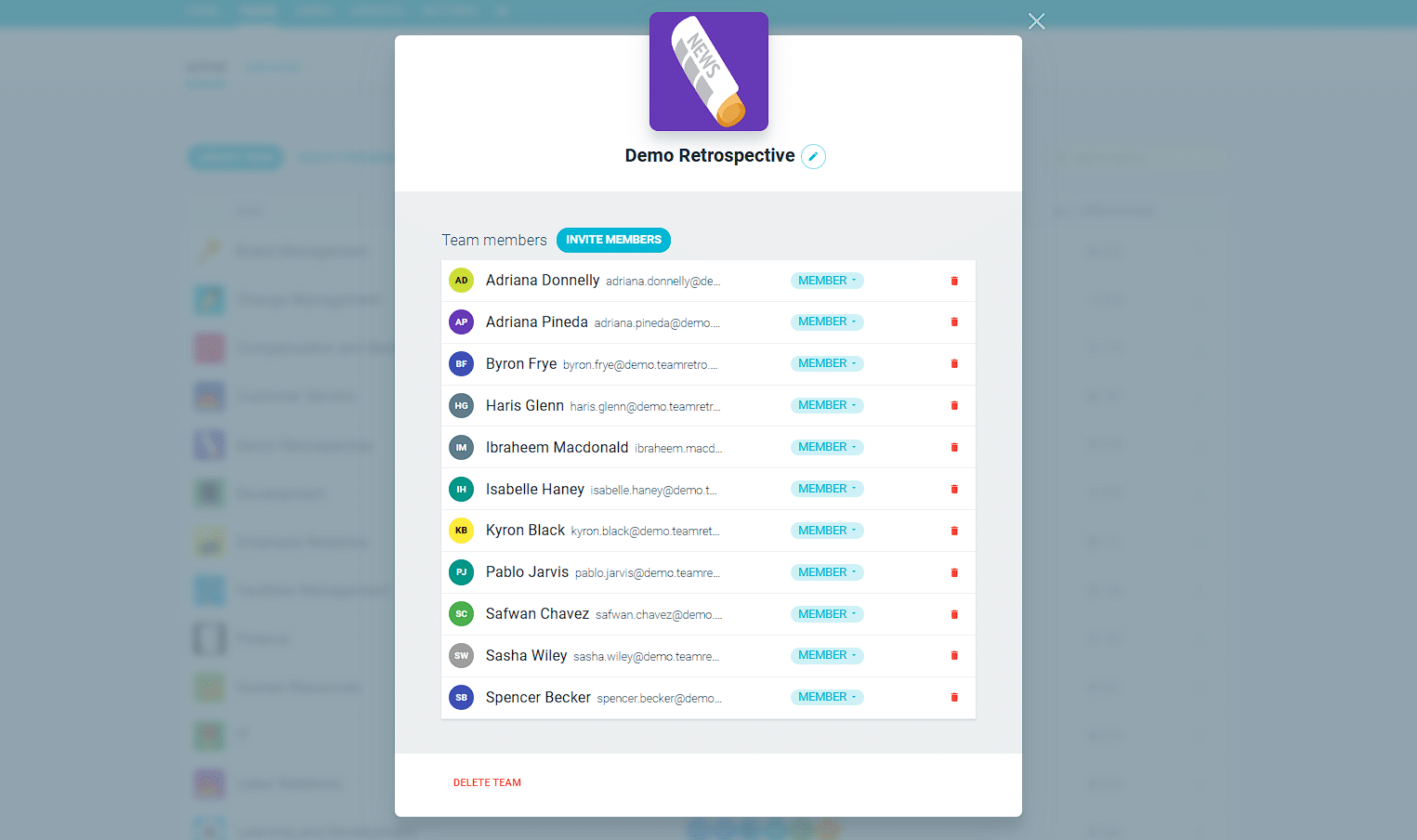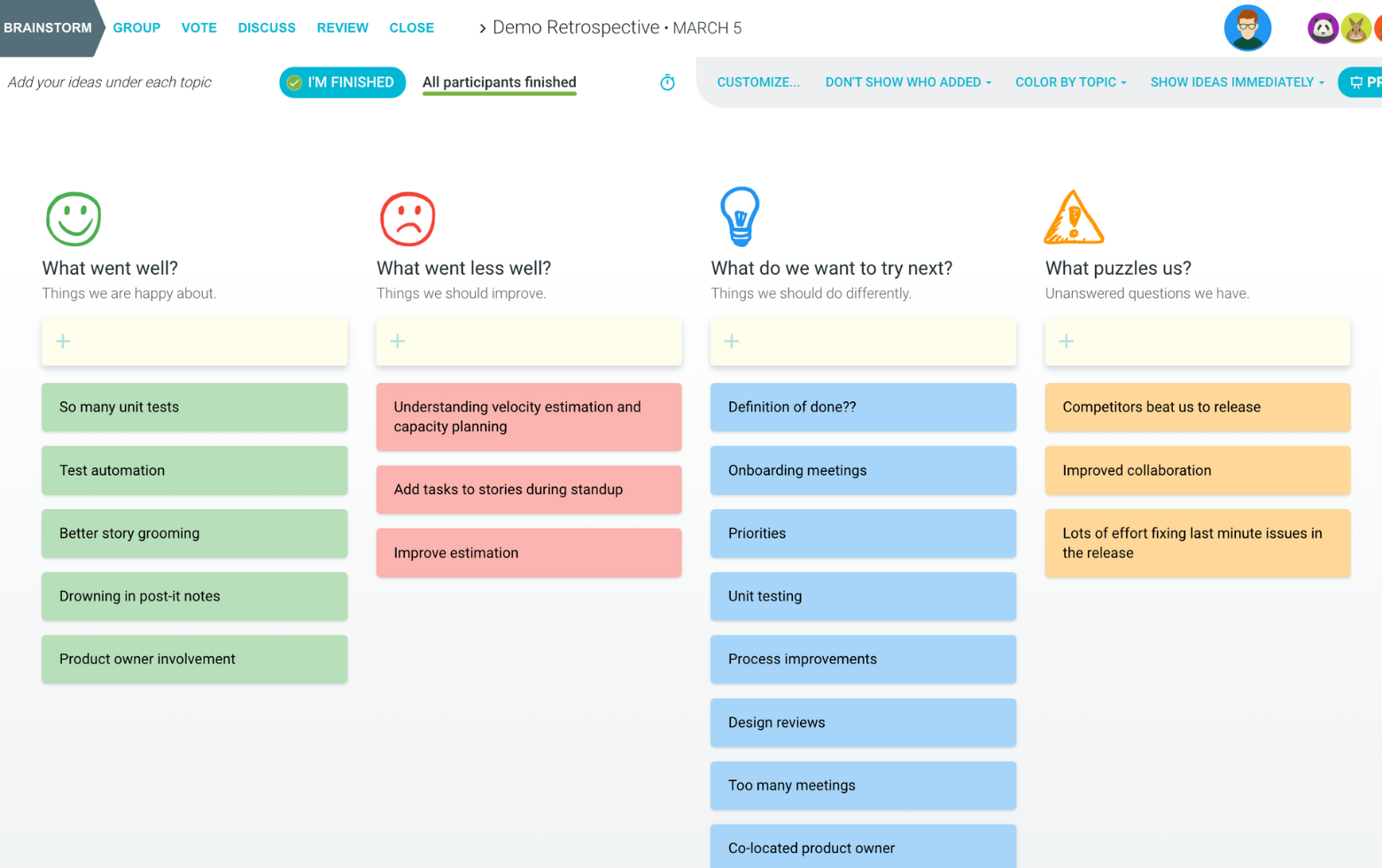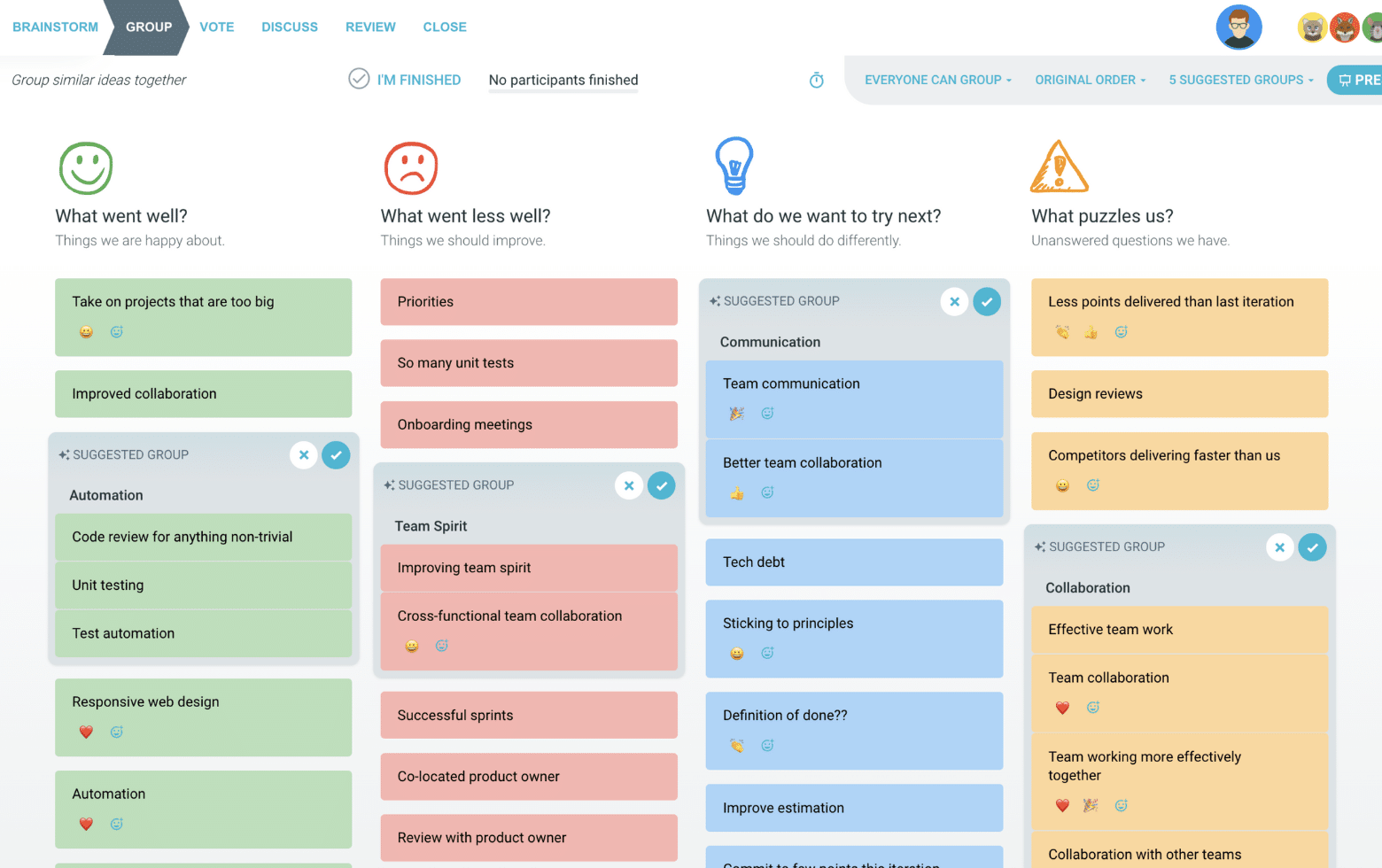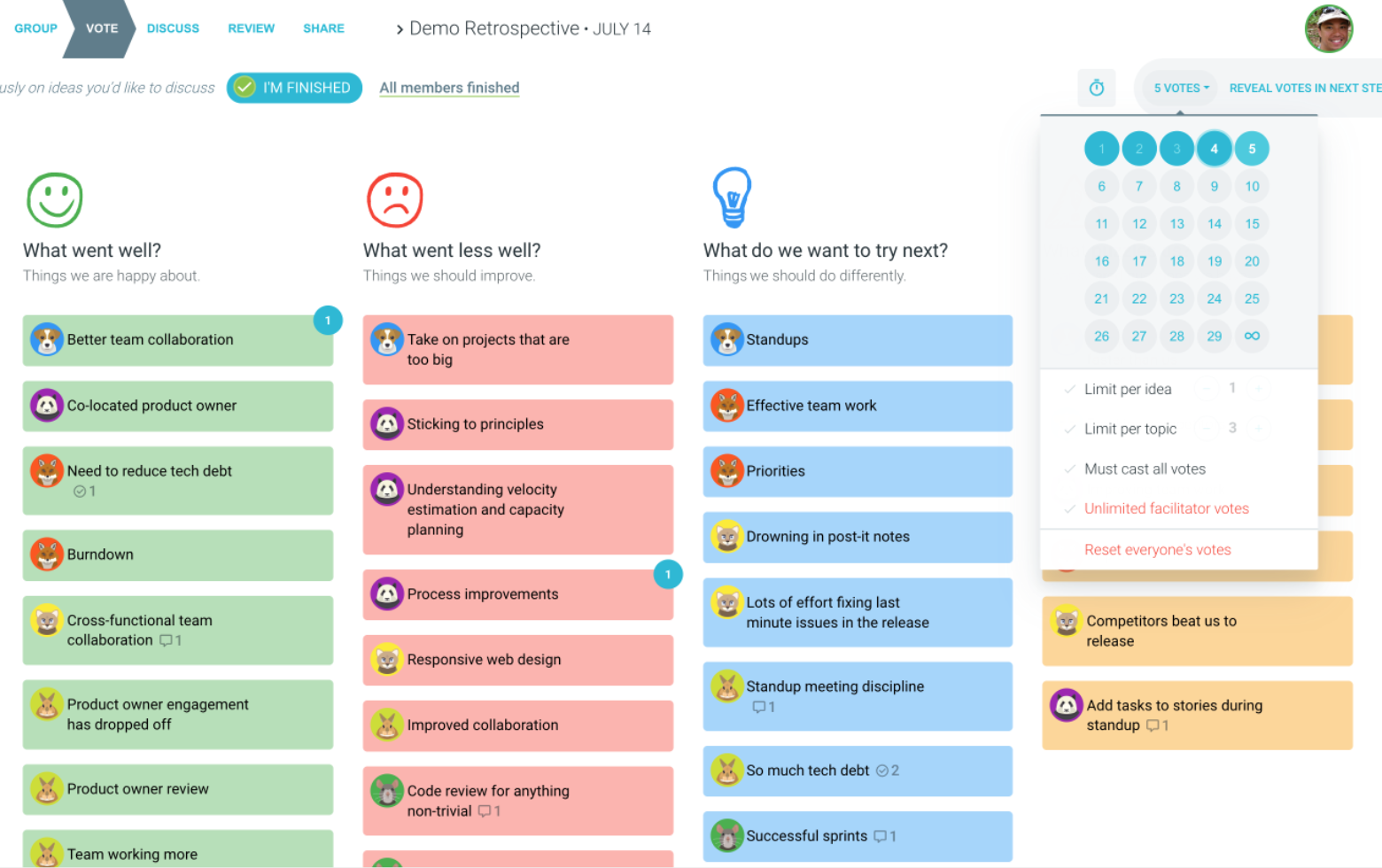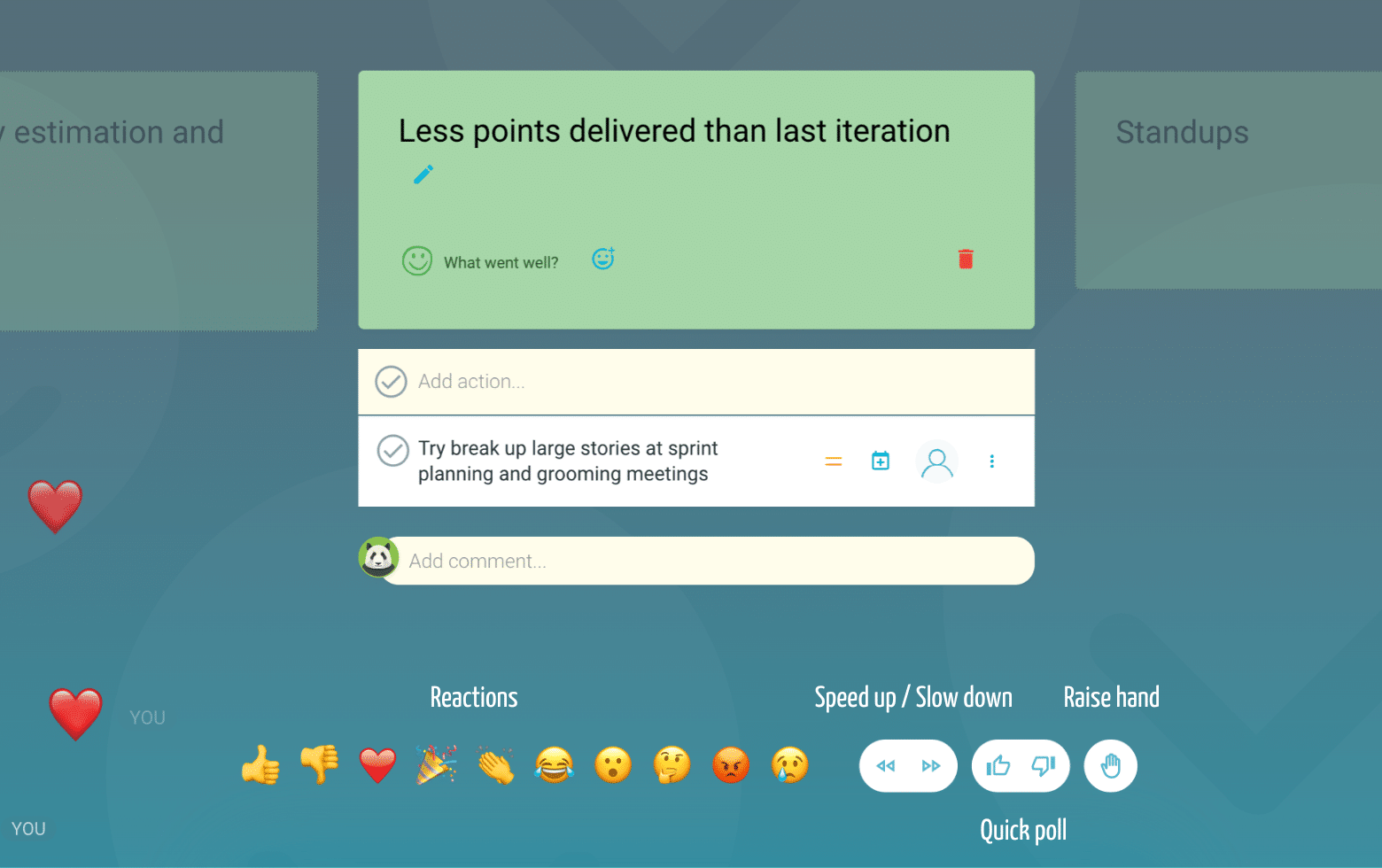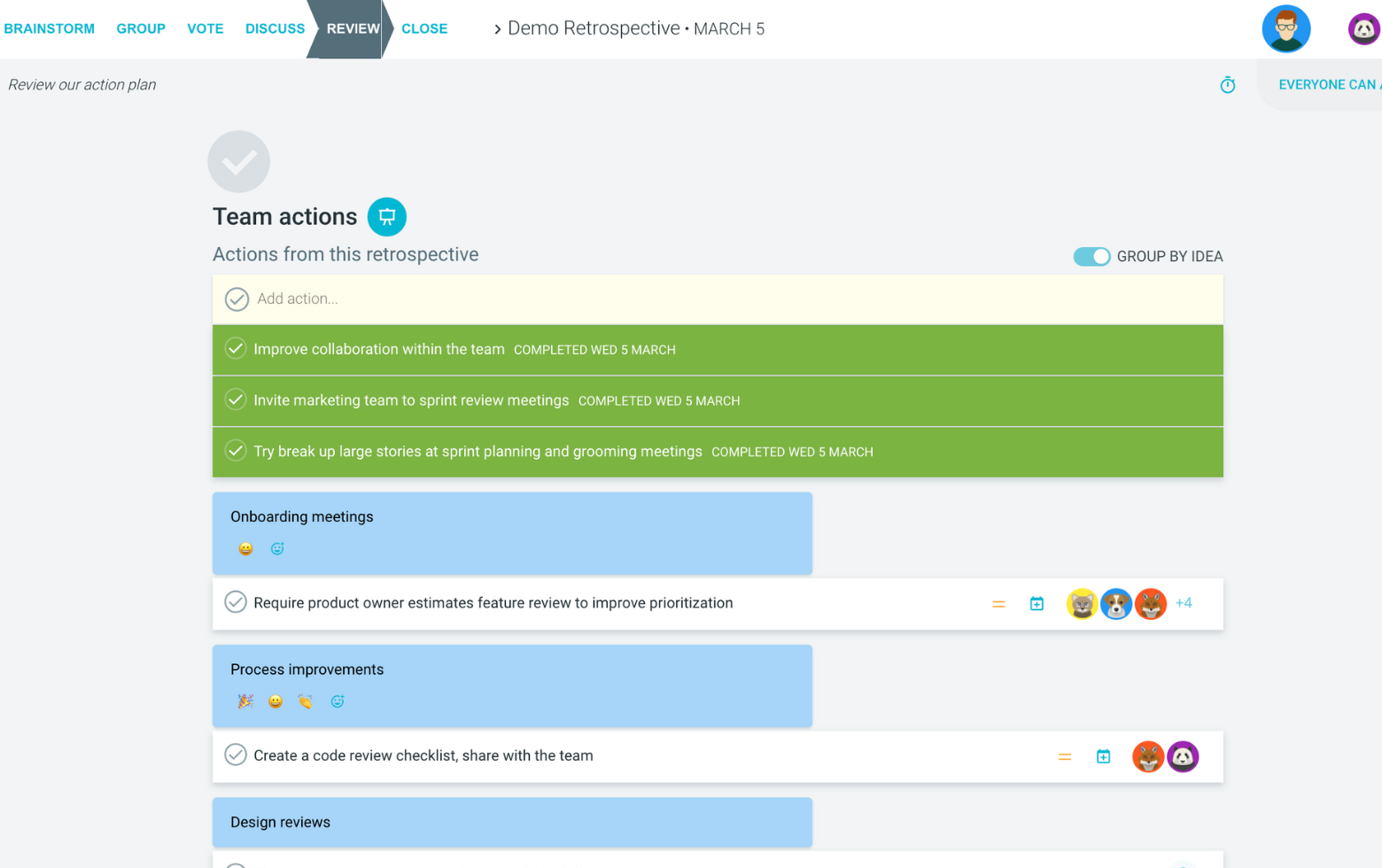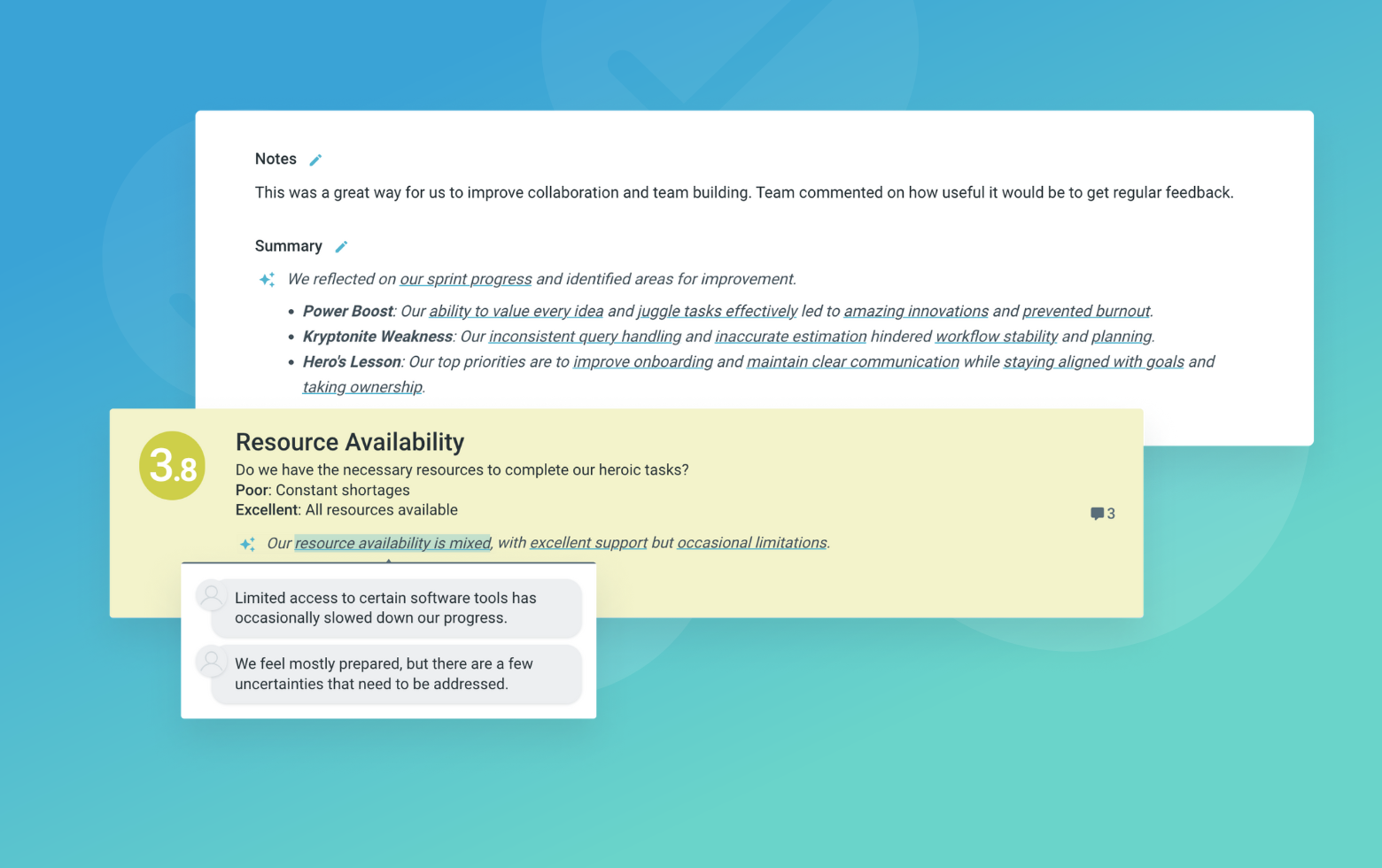The Psychological Safety retrospective helps teams assess and improve their environment of trust, openness, and mutual respect. Based on Amy Edmondson's research at Harvard Business School, psychological safety is the belief that team members won't be punished or humiliated for speaking up with ideas, questions, concerns, or mistakes.
This template enables teams to reflect on current practices that contribute to psychological safety, identify potential threats, and develop actionable strategies to create a more supportive environment. By focusing on these aspects, teams can build stronger relationships, encourage innovation, and improve overall performance.
Regular use of this retrospective format helps teams maintain awareness of their interpersonal dynamics and proactively address concerns before they become significant issues.
What is The Psychological Safety Retrospective
What have we done to create team safety?
What actions or behaviors have helped you feel safe speaking up?
Guide the team to identify specific behaviors, practices, or moments that have contributed to psychological safety. Encourage participants to share both formal practices and informal interactions that have made them feel supported and respected.
What would make our team feel unsafe?
Which situations or behaviors might prevent people from speaking up?
This is a sensitive topic - emphasize that responses should focus on behaviors and situations rather than individuals. Create space for honest reflection while maintaining a constructive tone.
What can we do to improve team safety?
What specific actions could help build a more supportive environment?
Focus on actionable suggestions that the team can implement. Encourage specific, measurable ideas rather than vague concepts. Help the team prioritize suggestions based on potential impact and ease of implementation.
Suggested icebreaker questions
- Share a time when someone helped you feel more confident at work
- What's one thing that makes you feel appreciated by your teammates?
Ideas and tips for your retrospective meeting
- Create a judgment-free zone by establishing ground rules at the start of the session
- Consider running this retrospective anonymously for teams that are just beginning to build psychological safety
- Focus on behaviors and situations rather than individuals when discussing challenges
- Follow up on action items from previous psychological safety retrospectives to show commitment to improvement
- Use breakout sessions for larger groups to encourage more intimate discussions
.
How to run effective meetings with TeamRetro
Start Your Session in a Click
Log into TeamRetro and choose your template. Customise questions and the workflow to create your perfect retro for your team.
Create Your Team Easily – No Separate Accounts Needed
Brainstorm Individually – Free From Bias
Smart Grouping for Faster Insights
Fair, Flexible, and Fast Voting
Engage, React, and Capture Key Insights
Walk your team through ideas one by one with Presentation Mode. Stay in sync, spark real-time discussions, and capture feedback with comments, live reactions, and polls—all in one place.
Turn Ideas Into Action
Propose next steps with team buy-in, get AI-powered action suggestions, and keep everything in one place. Committed actions sync to your personal dashboard and integrate with your workflow tools—keeping you on track.
Save, Share, and Stay on Track
Get quick AI-powered summaries, add facilitator notes, and store retrospectives in your library for easy access. Schedule your next session and track published actions to keep your team accountable at the next retro.
Turn Team Data into Actionable Insights
Uncover trends, common themes, and key engagement metrics at a glance. Track sentiment shifts, analyze conversations, and monitor completed actions to drive continuous improvement.
